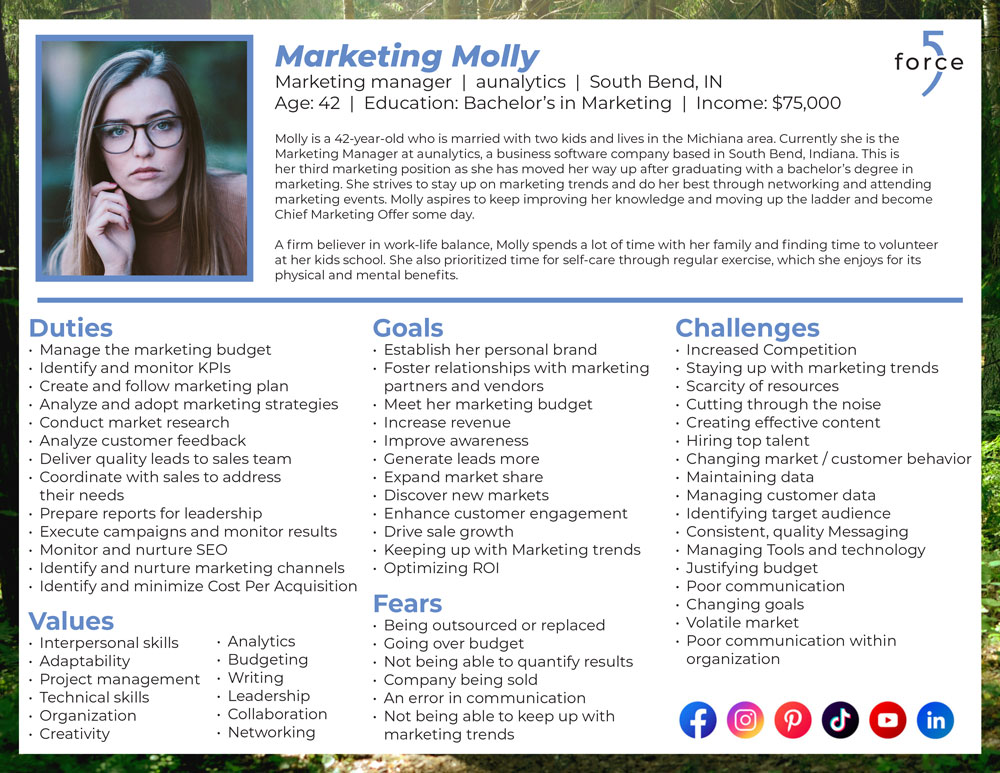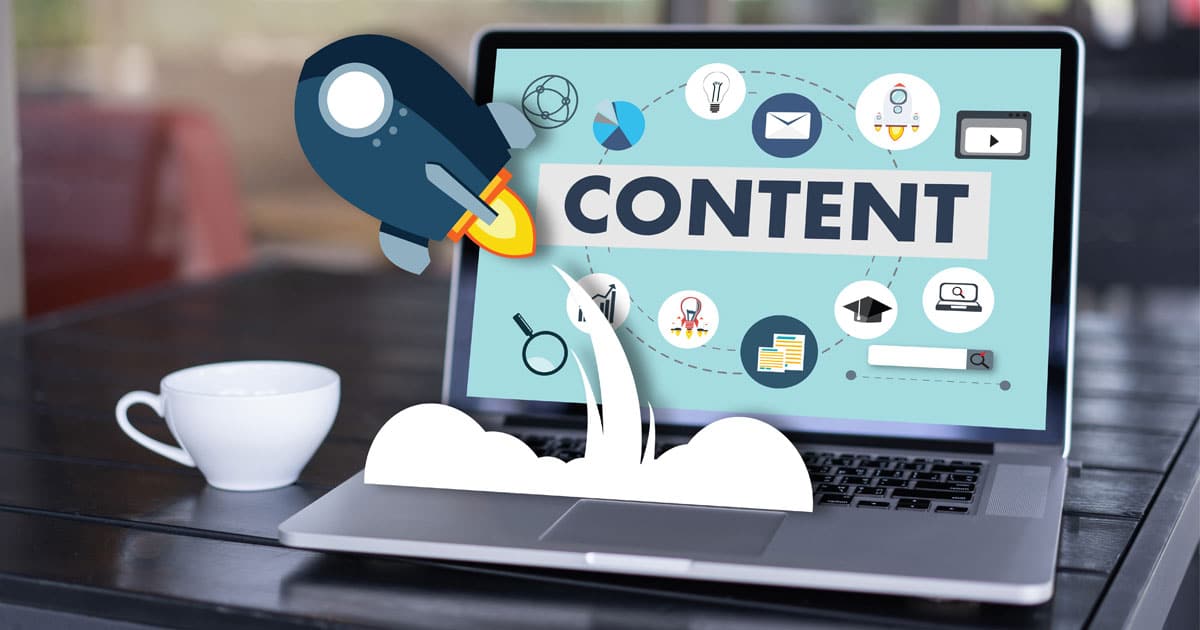Every day, digital platforms seem to improve their ad-targeting capabilities. Okay, maybe not every single day, but often enough to keep me on my toes. Recently, while planning a client’s digital ad campaign, I found myself reflecting on how precise these targeting options have become, and the possibilities they open up. But these advanced tools are useless if you don’t know who you’re targeting. Without a clear picture of your ideal customer, these tools might as well be darts thrown in the dark, or worse. That’s where buyer personas come in.
What Exactly Is a Persona?
A persona is a semi-fictional representation of your ideal customer. If you’ve never created one before, you might wonder if it’s really necessary. Trust me, it’s necessary. Gone are the days when you could rely on gut feelings or intuition to guide your marketing efforts. Personas give you invaluable insight into your ideal customers’ needs, preferences, motivations, and pain points. They help you craft messaging, products, and campaigns that truly resonate with your audience.
How Personas Drive Marketing Success.
1. Targeted Messaging and Content
As marketers, our ultimate goal is simple: get the right message to the right person at the right time. Personas help us do just that. By understanding your potential customers’ pain points and knowing how to address them in ways they’re likely to engage with, you can create content that speaks directly to them.
When you address their needs in a way that shows you “get it”, you build trust and increase the chances they’ll turn to you for help. Use the language and terminology they’d use. Think about where they might be in the buying cycle and tailor your content to answer the questions they’re likely asking at each stage.
2. Informed Marketing Channels and Strategies
Creating great content is one thing, but knowing where to share it is another. That’s where personas shine. They help you pinpoint the channels your audience prefers, whether social media, email, blogs, forums, trade publications, or something else entirely, so you’re not wasting time or resources.
Of course, media habits shift over time, so it’s smart to revisit your personas regularly and adjust for new trends and platforms.
3. Time Savings and Team Consistency
Personas don’t just make your marketing more effective; they also save time. Once you’ve nailed down the variables in your messaging and distribution strategies, there’s no need for guesswork or constant research. Plus, personas create consistency across your team, ensuring everyone is on the same page about who your target audience is and how to communicate with them.
4. Product and Service Refinement
Personas go beyond marketing, they can also guide your product development. By understanding your customers’ needs and frustrations, you can refine your offerings to better match or even exceed their expectations.
Learn More About How to Identify Your Target Audience Here.
How to Create a Buyer Persona
Step 1: Identify Your Buyer Personas
Start by gathering intel from your CRM or CMS, sales team, and customer service team, competition, anyone who interacts with your customers. Investigate who the key decision-makers are for purchasing your product or service. If you’re in a B2B space, you’ll likely need to account for multiple decision-makers.
Aim for three or four personas. More than that can get overwhelming and defeats the purpose of creating them in the first place.
Step 2: Research Your Buyer Personas
This is where the fun begins. Think of it as playing detective. Analyze your buyers’ roles, responsibilities, and decision-making processes. What are the current trends, challenges, or threats they face? Consider their demographics (age, income, education, etc.), psychographics (values, interests, personality traits), and professional goals.
Here are some key elements to include:
Key Elements to Include in Your Buyer Persona
- Demographics: The basics—age, income, education, and location—help paint a foundational picture of who your target audience is.
- Psychographics: Go deeper by exploring your persona’s values, interests, lifestyle, and personality traits. This insight reveals what drives their decisions and preferences.
- Goals: Identify what they aim to achieve, whether it’s personal (like improving their health) or professional (like increasing efficiency at work).
- Duties: Consider their responsibilities in both work and personal life. For B2B personas, focus on their job duties—what’s on their plate day-to-day? For B2C, consider personal responsibilities like managing a household or caring for children.
- Values: Highlight the qualities they prioritize when choosing a company or individual to work with, such as trustworthiness, innovation, or affordability.
- Fears: Understand what keeps them up at night. These fears might be professional (e.g., missing a deadline or making a costly mistake) or personal (e.g., struggling to pay bills or finding reliable childcare).
- Challenges: What obstacles are they currently facing? Professionally, this could include navigating industry disruptors or meeting tight budgets. Personally, it might be searching for a new home in a tough market or balancing work and family commitments.
- Pain Points: Pinpoint their most pressing frustrations or challenges, whether it’s a lack of resources, inefficiencies in their current solutions, or unmet needs.
- Buying Behavior: Understand how they approach decisions. Are they impulse buyers who act quickly, or do they prefer to research extensively before committing?
- Preferred Channels: Know where they consume content—social media, email, blogs, industry publications—and tailor your outreach accordingly.
- Common Objections: Anticipate why they might hesitate to choose your product or service. Are they concerned about cost, complexity, or competitor options? Address these proactively in your messaging.
- Influences: Who or what shapes their decisions? This could include coworkers, friends, online reviews, influencers, or thought leaders.
- Brand Perception: Gauge their familiarity with your brand. Are they loyal customers, new prospects, or switching from a competitor?
Download Your Buyer Persona Template Here!
When researching your personas, the sky is the limit. And you keep digging until you feel comfortable. Use what you discover to extrapolate another aspect of your persona. For example, if you discover someone in a target profession tends to be a certain age, you take that information to see what social media platforms resonate best with that age range.
Some of my favorite places to search are government statistical websites, job search websites, social media, online forums, industry publications, and third-party market research companies. You should also consult your Google Analytics, heat maps, e-commerce data, perform surveys, interviews, and anything else you think will get you a better picture of your persona. The sky isn’t even the limit.
Step 3: Organize Your Persona
Keep it simple. Your personas should fit on a single page so they’re easy to reference. Include:
- A mnemonic name (e.g., “Tech-Savvy Tina” or “Budget-Conscious Bob”) to make them memorable.
- A photo to give the persona a human touch.
- A clean, easy-to-read layout with graphics and clear section titles.
Personas Are Living Documents
Creating personas is a rewarding process. You’ll learn a lot about your audience—maybe even challenge some assumptions. But remember, your personas aren’t set in stone. Revisit them regularly to reflect new challenges, trends, and opportunities.
In the end, personas aren’t just tools; they’re your secret weapon for smarter, more effective marketing. So, roll up your sleeves, do the work, and watch your campaigns thrive.
Personas are fun to create, but can be complicated if you haven’t made one before. If you need some assistance creating your personas give us a call at 574.234.2060, or fill out our contact form here, we would love to help.




